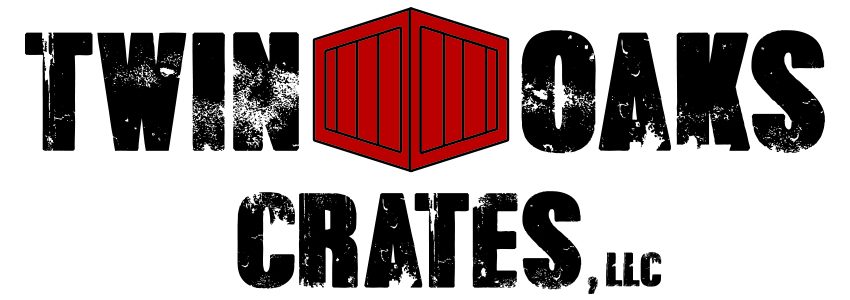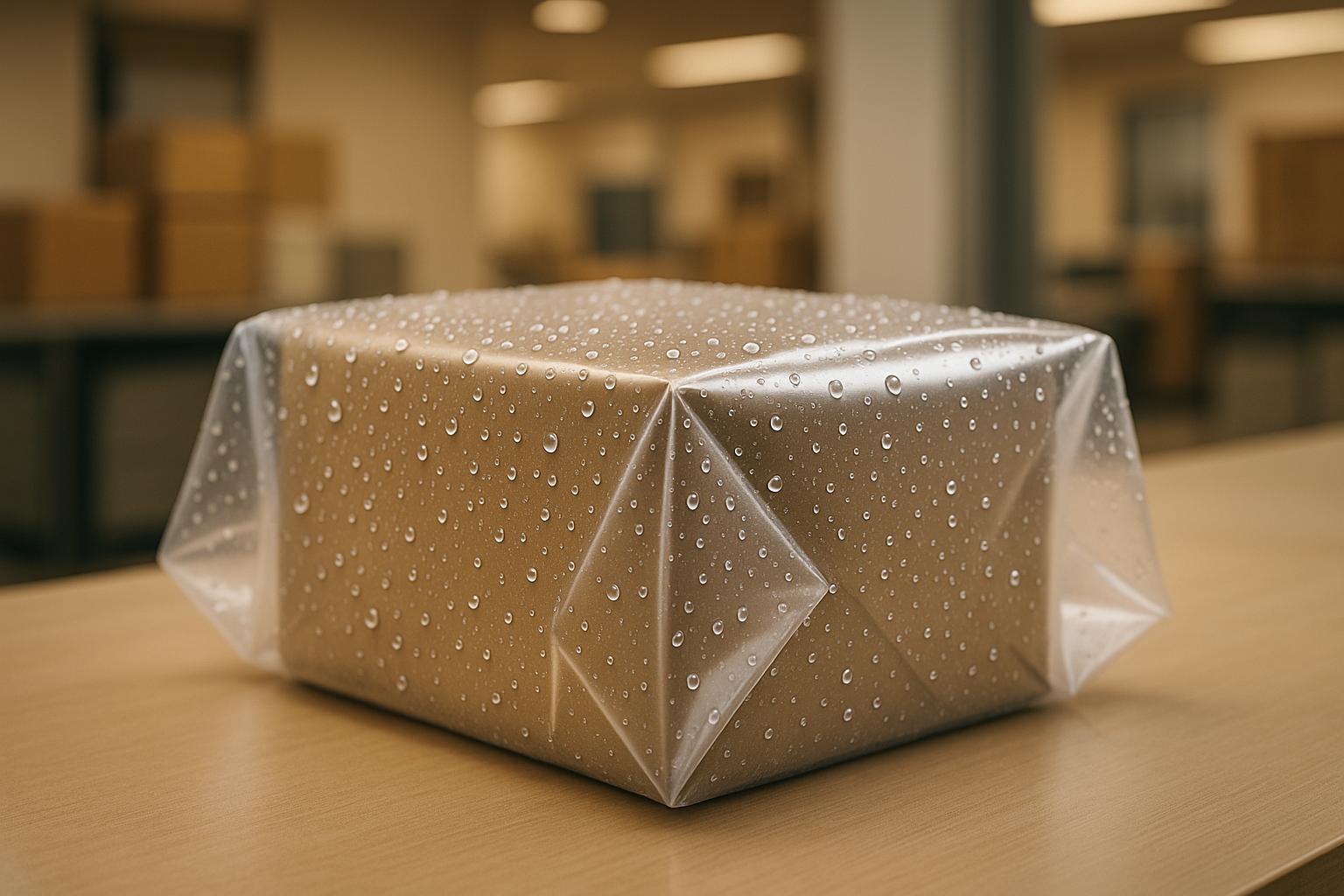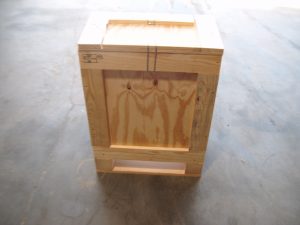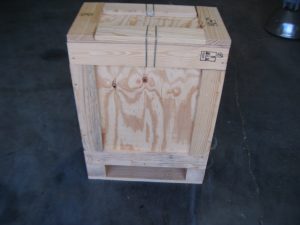A vapor barrier is a material that prevents moisture from damaging sensitive items during shipping or storage. These barriers are critical for protecting electronics, medical devices, metals, and other products from humidity, condensation, and corrosion. Whether you’re shipping across oceans, via air, or storing in damp environments, vapor barriers help maintain product quality by creating a controlled, low-humidity environment.
Key Takeaways:
- Purpose: Blocks water vapor to prevent moisture damage.
- Applications: Used in shipping electronics, metals, medical equipment, and more.
- Materials: Common options include polyethylene, aluminum foil composites, and multi-layer laminates.
- Benefits: Reduces risks like corrosion, mold, and electrical failure, while extending product life.
Quick Overview:
- How They Work: Create a near-airtight seal to block moisture.
- Key Features: Low water vapor transmission rate (WVTR), tensile strength, flexibility, and chemical resistance.
- Shipping Needs: Ideal for humid climates, long transit times, and sensitive goods.
For maximum protection, vapor barriers are often paired with desiccants and custom wooden crates, ensuring goods arrive intact and undamaged. Professional packaging services can help select the right materials and ensure proper application.
How Vapor Barriers Work and Their Properties
How Vapor Barriers Block Moisture
Vapor barriers act as a physical shield with low permeability, stopping water molecules from passing through their tightly woven or laminated layers. This creates a controlled environment where internal humidity stays consistent, even when external conditions fluctuate.
These barriers are particularly effective in preventing condensation. When warm, humid air meets cooler surfaces, moisture can form – but vapor barriers block this process. By isolating packaged goods from external humidity and temperature changes, they ensure protection whether items are being shipped through tropical climates, exposed to temperature shifts during air travel, or stored in damp warehouses. Their effectiveness, however, depends on the specific material properties discussed below.
Important Material Properties
The performance of vapor barriers hinges on a few key material traits that make them reliable under real-world shipping conditions:
- Water Vapor Transmission Rate (WVTR): This is the most critical measure of a vapor barrier’s effectiveness. WVTR shows how much water vapor can pass through the material in a given time, typically measured in grams per square meter per 24 hours (g/m²/24hr). The best vapor barriers have extremely low WVTR values, often below 0.1 g/m²/24hr.
- Tensile Strength: A vapor barrier must endure physical stresses like tearing, puncturing, and stretching during handling and transport. Strong materials are essential when packaging heavy or sharp-edged items, ensuring the barrier remains intact and effective.
- Flexibility: To fit various package shapes without cracking or leaving gaps, vapor barriers need to be pliable. This flexibility is crucial across a range of shipping conditions, from freezing temperatures in cargo holds to the heat of warehouses.
- Chemical Resistance: Some items emit vapors or come into contact with cleaning agents and industrial chemicals. A good vapor barrier resists chemical degradation, maintaining its protective qualities under such conditions.
- Heat Sealability: To create airtight seams and closures, the material must bond effectively under heat and pressure. This ensures a continuous, leak-proof barrier around the packaged goods.
Common Materials Used in Vapor Barriers
Different materials are used to construct vapor barriers, each tailored to specific needs and applications:
- Polyethylene (PE): Widely used for its moisture resistance and affordability. Low-density polyethylene offers flexibility, while high-density versions provide greater strength. Depending on thickness, PE barriers achieve WVTR values between 0.3-1.0 g/m²/24hr.
- Aluminum Foil Composites: These provide the highest level of moisture protection. By combining thin aluminum layers with plastic films, they achieve WVTR values as low as 0.01 g/m²/24hr. The aluminum layer blocks water vapor completely, while the plastic adds flexibility and tear resistance.
- Nylon-Based Barriers: Known for their strength and puncture resistance, nylon barriers also offer solid moisture protection. They are ideal for demanding applications requiring both durability and moisture control, with WVTR values typically between 0.2-0.5 g/m²/24hr.
- Multi-Layer Laminates: These combine multiple materials to optimize various properties. For example, an outer polyester layer might provide strength, a middle aluminum layer blocks moisture, and an inner polyethylene layer ensures heat sealability. Such laminates achieve extremely low WVTR values while maintaining excellent mechanical performance.
- Metallized Films: These use vacuum-deposited metal coatings on plastic substrates, offering a cost-effective solution with good moisture resistance. While not as impermeable as aluminum foil composites, they strike a balance between performance and affordability for many industrial needs.
When You Need Vapor Barriers
Industries and Products That Need Vapor Barriers
Vapor barriers play a crucial role in safeguarding a variety of products across industries. They are commonly used to shield sensitive electronics, metal components, and organic materials like wood, food, textiles, and paper from the harmful effects of moisture during shipping and storage. Without this protection, these items could suffer significant damage, compromising their quality and usability.
Shipping Conditions That Require Vapor Barriers
Shipping environments can be tough on products, especially when moisture comes into play. High humidity levels and long transit times often lead to condensation, which can wreak havoc on shipments. Vapor barriers act as a line of defense, minimizing moisture buildup in challenging environments like ocean freight, air transport, and warehouses. These scenarios often demand strict compliance with regulatory standards to ensure product safety and integrity.
Meeting Regulatory Standards
To meet international packaging requirements, vapor barrier systems are often combined with ISPM 15-certified wooden crates. This pairing not only satisfies regulatory guidelines but also provides robust moisture protection for shipments. At Twin Oak Crates, LLC, we specialize in integrating these systems with our certified wooden packaging solutions, offering a reliable way to keep your goods safe and secure during transit.
Benefits of Vapor Barriers
Benefits of Using Vapor Barriers
Vapor barriers provide an airtight seal that keeps moisture out during shipping and storage, creating a dry environment ideal for protecting sensitive items.
These barriers go beyond just keeping things dry. They guard against corrosion, oxidation, mold, and even electrostatic discharge [2, 3, 6, 7]. For instance, they help electronics stay corrosion-free, prevent metal machinery from rusting during ocean transport, and ensure medical equipment remains safe over long distances.
By blocking moisture, vapor barriers help extend the shelf life of products and maintain their quality [2, 3, 6, 7]. This is especially important for aerospace components and other precision equipment where even minor damage can have major consequences.
Using vapor barriers also cuts down on expensive returns and damage claims. When combined with tools like desiccants or vacuum sealing, they offer an extra layer of protection [3, 7].
sbb-itb-1c2a65d
Flexible Packaging Paper with one-of-a-kind water vapor barrier | Koehler Paper
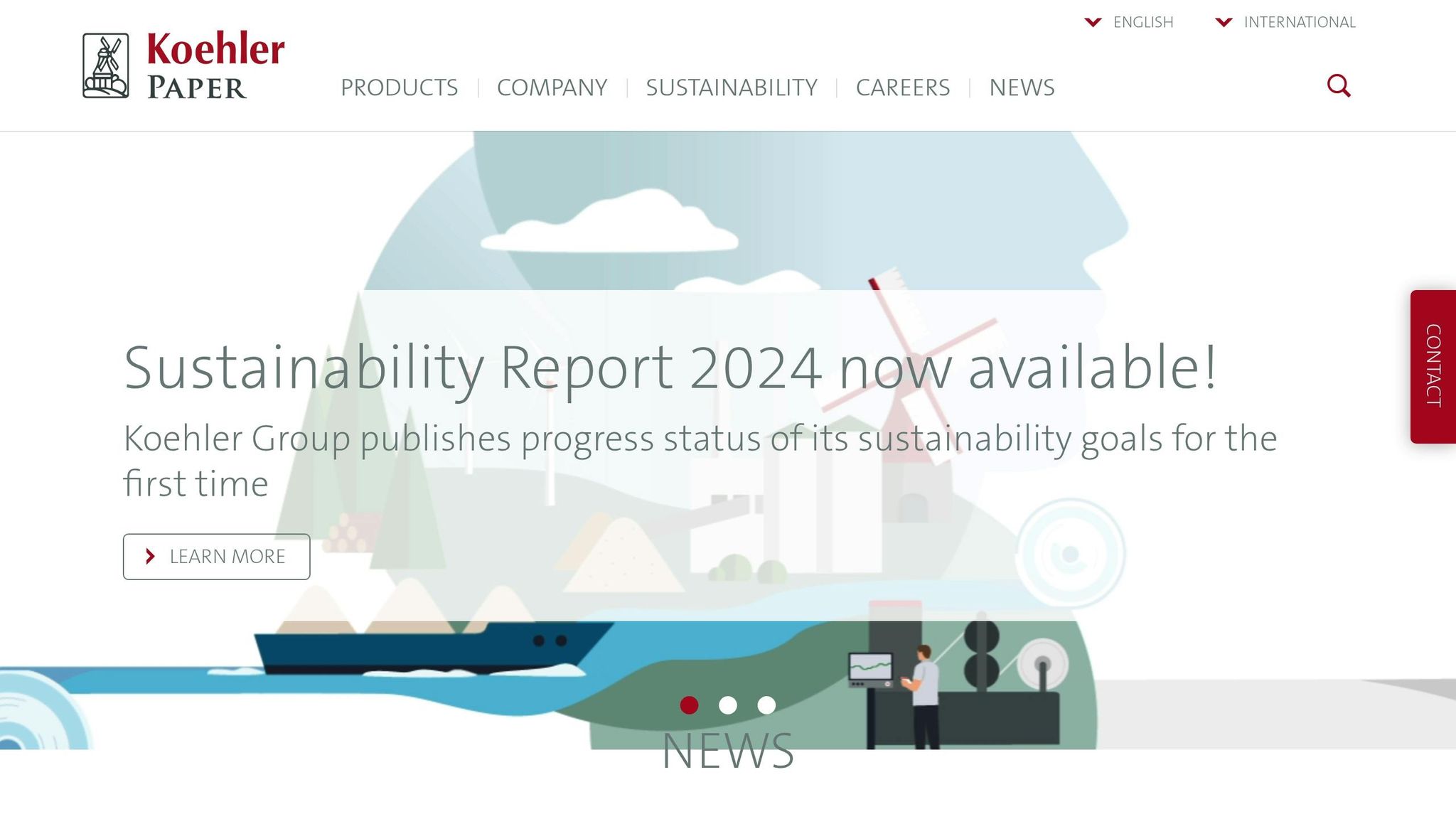
Using Vapor Barriers With Custom Wooden Crating
This section dives into how vapor barriers can be effectively used with custom wooden crating to protect sensitive equipment.
Steps for Adding Vapor Barriers to Packaging
To integrate vapor barriers into wooden crates, start by selecting a material that matches the product’s moisture sensitivity and shipping conditions. Experts often recommend placing the vapor barrier as the final interior layer, ensuring a complete seal around the equipment.
Once you’ve chosen the material – like aluminum foil laminates or polyethylene films – measure and cut it to fit the crate’s interior, making sure to leave extra material for sealing seams and corners. Use heat sealing or adhesive tape to secure all seams, creating a moisture-tight enclosure.
Adding desiccant bags is another key step. Place these strategically throughout the crate to control moisture levels before sealing the barrier. Pay close attention to folding and sealing all edges carefully to prevent any weak spots where moisture could seep in. Some professional services go a step further by using vacuum sealing to remove excess air, which enhances the barrier’s effectiveness. By following these steps, you can maintain reliable moisture control throughout the crate.
Choosing Materials and Customization Options
The choice of materials depends on the shipping environment and the product’s specific needs. For instance, extreme temperature conditions may require specialized films designed to maintain their protective properties under harsh environments.
Customization options can further enhance protection. Transparent inspection windows, multiple compartments, or built-in desiccant pockets allow for tailored solutions that meet unique shipping requirements. Once you’ve selected the right materials and features, precise application is critical to ensure the barrier performs as intended.
Why Professional Packaging Services Matter
Professional packaging services add value by ensuring your vapor barrier is applied correctly and performs reliably. Companies like Twin Oak Crates, LLC specialize in integrating vapor barriers with their custom wooden crating solutions, offering a dependable way to protect sensitive equipment during transit.
Their experienced technicians identify potential weak points and use commercial-grade sealing techniques to ensure maximum protection. They also conduct quality assurance tests, such as leak detection and seal strength checks, to verify the barrier’s integrity before shipping. These measures significantly reduce the risk of damage during transport.
Twin Oak Crates, LLC also holds ISPM 15 certification, which ensures compliance with international shipping standards. In addition, their digital crate design services optimize both crate construction and vapor barrier placement, often improving protection while keeping costs in check. With professional installation, you can trust that your shipment will arrive intact and secure.
Conclusion
Main Points
Vapor barriers serve as a critical line of defense against moisture, safeguarding sensitive equipment during shipping and storage. As Reid Packaging aptly puts it, "There is no crate or box strong enough to keep moisture out entirely". This makes vapor barriers an indispensable part of any well-rounded packaging strategy.
Moisture can wreak havoc on electronics, medical devices, aerospace components, and industrial machinery in mere hours, often causing hidden damage that can go unnoticed until it’s too late. By creating a near-airtight environment around your products, vapor barriers help prevent issues like corrosion, electrical failures, and material degradation – problems that can lead to costly insurance claims and potentially harm your brand’s reputation.
Ocean shipping, air transport, and exposure to varying climates present significant moisture risks. Temperature swings, high humidity, and long transit times create the perfect conditions for moisture infiltration. For industries handling high-value equipment, ensuring proper protection is non-negotiable, especially when compliance with aerospace, medical, or pharmaceutical standards is a priority.
Combining vapor barriers with custom wooden crating offers a dual-layered solution that addresses both physical protection and moisture control. Professional installation ensures that the barriers are sealed correctly, desiccants are placed effectively, and quality checks are thorough, minimizing the risk of transit-related damage.
This highlights why choosing the right vapor barrier is so important for preserving the integrity of your shipments.
Next Steps for Vapor Barrier Solutions
Now that we’ve covered the essentials, it’s time to evaluate your specific shipping needs and vulnerabilities. Think about factors such as your transportation route, environmental conditions, storage duration, and how sensitive your equipment is to moisture. Items like electronics with exposed metal parts, precision instruments, or shipments headed to humid regions require extra care.
Pay attention to technical details when selecting materials. Look for options with low water vapor transmission rates (WVTR), high tensile strength, and resistance to chemicals. For government or military shipments, you may need to meet specific standards, such as MIL-PRF-131 materials or MIL-D-3464 compliant desiccants.
Consulting with professionals can make a huge difference in achieving optimal protection. For example, Twin Oak Crates, LLC specializes in integrating vapor barriers with custom wooden crating. They can guide you in selecting the right materials, calculating desiccant needs, and applying proper sealing techniques. Their ISPM 15 certification and digital design services ensure solutions that balance protection with cost efficiency. Incorporating these strategies into your shipping process can significantly enhance the safety and reliability of your shipments.
FAQs
What’s the difference between polyethylene and aluminum foil vapor barriers, and how do you decide which one to use?
Polyethylene vapor barriers are a practical option when you need lightweight, flexible, and budget-friendly moisture resistance. They work well in situations where the demands for protection aren’t too extreme. However, when it comes to blocking moisture and gases effectively, aluminum foil vapor barriers take the lead, thanks to their aluminum layer.
Aluminum foil barriers are perfect for safeguarding delicate items, such as electronics or perishable goods, especially during shipping or long-term storage where keeping moisture out is a top priority. In contrast, polyethylene barriers are better for scenarios where moderate moisture protection is enough, and cost or flexibility matters more.
When choosing between the two, think about how sensitive your goods are, the conditions they’ll encounter, and how much protection they’ll need. For valuable or moisture-sensitive items, aluminum foil is the more reliable option. Meanwhile, polyethylene is a solid choice for less demanding applications.
How do vapor barriers support international shipping requirements, and why is ISPM 15 certification necessary?
Vapor barriers are essential in international shipping, serving as a shield against moisture damage. This protection is particularly critical for delicate items like electronics, keeping them safe during transit and ensuring they meet global moisture control requirements.
Meanwhile, ISPM 15 certification focuses on wooden packaging materials. This certification guarantees that the wood is treated to eliminate pests, adhering to international phytosanitary standards. It’s a requirement in many countries, aimed at preventing the spread of invasive species, simplifying customs procedures, and ensuring alignment with global trade and environmental regulations.
Can I reuse vapor barriers, or should they be replaced for every shipment to ensure proper protection?
When it comes to vapor barriers, reusing them is possible – but only if they’re completely undamaged and intact after a shipment. That said, replacing them with each use is usually the better choice for ensuring maximum protection against moisture. Even a small compromise in the barrier during transit or handling can put your goods at risk.
Opting for a new vapor barrier with every shipment helps reduce the chances of moisture damage and keeps your packaging solution reliable. While reusing might save a bit of money upfront, the potential cost of damaged goods often outweighs those savings.
